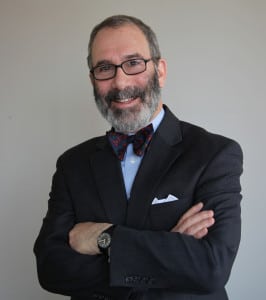The pharma sector is losing its heroic mystique. An industry that pioneered vaccines against diseases endangering billions finds itself facing the ill-wind of public disdain.
Regardless of whether some of the pricing and business decisions of recent months have been justified, patients and policymakers are disappointed and bewildered.
This price obsession has led to Congress dumping Turing, Valeant and Gilead into the same Senate hearing lineup. The congressional paintbrush of alleged greed spares no one.
From a health communications vantage point, soon there will be no escaping public conversation around cost. Suddenly on the heels of Affordable Care and Medicare Open Enrollment, and with all Americans being invited, enticed or fined in order to ensure health-plan participation, society wrings its collective hands about the cost of our insurance, pharma products and provider services.
The old escape door was to talk value, the burden of research and even that cost to the patient differs from cost to the payer. This approach to deflecting the pricing problem to another health sector will fly no longer. In fact, society responds by saying, “If your R&D model is no longer working successfully, why do we need to subsidize this approach?”
PR firms in pharma mimic their client-base responses. Instead, health PR pros should shift from a long-standing knee-jerk response: “It costs $1.2 billion and takes 10 years to bring a new compound to the market” message and project the brand’s enlightened voice to bring something new to the table – understand the urgencies and anxieties of the patient, provider, payer and policymaker environment.
The country’s health system – where employers shoulder the burden for providing employees with health insurance – is highly fragmented. As employers change health plans to contain costs, employees often are forced to switch their primary care physician. In a system lacking portable electronic medical records, consumers must reinvent themselves: new forms to fill out, new medical histories to convey and new prescriptions to request. This can only lead to a disenfranchised consumer/patient. Plans, providers and pharma companies also find this constant change disruptive.
At the same time, physicians seeking to use the latest therapies have their own system-wide frustrations.
Patients and payers desire medical innovation; however, the moment the Food and Drug Administration (FDA)approves a drug and its price is announced, the lens through which consumers interpret value is cost. Health public policy and communication gurus must now take the helm and guide internal client audiences to seek a new path to success and sector-to-sector collaboration by opening discussion around price sensitivity. They even should point to new pricing models that reflect medication impact from drugs that manage better to arrest disease (and extend quality life). Plans are recognizing that “dreaded” formularies can be platforms to educate their customers on the cost/care/access balance.
The health environment is seeking PR game changers. What will PR firms with large health disciplines need to provide clients to be at that table as counselors, planners and creative leaders? While the challenge of health-sector reputation may be unsolvable, brands can rise above the sector morass. As we see from the recent media storms, doing the right thing is the best route.
Here are four suggestions for PR pros seeking to be part of an essential conversation:
1. Be a Lifelong Learner: New science, treatments, reimbursements, formulary structures and ways of communicating demand constant updating of skills. Millennials are outpacing Boomers demographically and that means a knowledge shift in how the health system will operate, communicate and how it will evolve to meet a new generation’s expectations. There are plenty of free and high-grade reports available to study. The time to begin is now.
2. Remember Everything is Discoverable: Transparency is an everyday PR requirement. While information can be marked “confidential” and “for planning purposes only,” every plan and email is subject to discovery and becoming part of a congressional inquiry – especially documents shared with outside entities for background. The old adage remains true: “If you don’t want to see it, hear it or read it, don’t say it!”
3. Know Prices for Similar Therapies: New therapies often come with a price that reflects their value. Being a new product is no longer a pass to outprice the category. Suddenly consumers, payers and media are reacting to pricing that surprises – look at the cholesterol category and even life-extending cancer drugs. Don’t wait until FDA approval to begin to define product value. Establish brand value through science and recognize that payers are part of the market’s checks and balances.
4. Collaborate in a Diverse Market: Payers, providers, pharma, patients and policymakers play different roles within the market dynamic and their objectives are different. That said, everything will converge at the point-of-care, namely the patient. Beyond plan discounts and co-pay cards to reduce the patient cost burden, think about ways to bring the other sectors to your program’s planning table. The consumer is worn-out from hearing that someone or something is an obstacle to access. Plans that envision sector-to-sector collaboration will become the next big idea.
CONTACT: @GilBashe
This article originally appeared in the December 14, 2015 issue of PR News. Read more subscriber-only content by becoming a PR News subscriber today.

